

E-Books → Inorganic Nanostructures Properties and Characterization
Published by: voska89 on 28-07-2022, 23:27 |  0
0

Inorganic Nanostructures: Properties and Characterization By Prof. Petra Reinke(auth.)
2012 | 199 Pages | ISBN: 3527409254 | PDF | 3 MB
This monograph for young researchers and professionals looking for a comprehensive reference offers an advanced treatment of the topic that extends beyond an introductory work. As such, it systematically covers the inorganic nanostructures in the breadth needed, while presenting them together with the surface science tools used to characterize them, such as electron spectroscopy and scanning probe techniques. The unique challenges in the fabrication of nanostructures are illustrated, and set into context of controlling structure, dimensionality and electronic properties.
E-Books → Inorganic Structural Chemistry, Second Edition
Published by: voska89 on 27-07-2022, 15:34 |  0
0
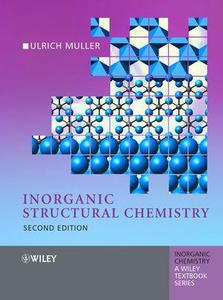
Inorganic Structural Chemistry, Second Edition By Dr. rer. nat. Ulrich Muller(auth.)
2006 | 278 Pages | ISBN: 047001864X | PDF | 12 MB
The essential introduction to the understanding of the structure of inorganic solids and materials. This revised and updated 2nd Edition looks at new developments and research results within Structural Inorganic Chemistry in a number of ways, special attention is paid to crystalline solids, elucidation and description of the spatial order of atoms within a chemical compound. Structural principles of inorganic molecules and solids are described through traditional concepts, modern bond-theoretical theories, as well as taking symmetry as a leading principle.Content: Chapter 1 Introduction (page 1): Chapter 2 Description of Chemical Structures (pages 2-11): Chapter 3 Symmetry (pages 12-29): Chapter 4 Polymorphism and Phase Transitions (pages 30-38): Chapter 5 Chemical Bonding and Lattice Energy (pages 39-44): Chapter 6 The Effective Size of Atoms (pages 45-51): Chapter 7 Ionic Compounds (pages 52-61): Chapter 8 Molecular Structures I: Compounds of Main Group Elements (pages 62-72): Chapter 9 Molecular Structures II: Compounds of Transition Metals (pages 73-84): Chapter 10 Molecular Orbital Theory and Chemical Bonding in Solids (pages 85-102): Chapter 11 The Element Structures of the Nonmetals (pages 103-117): Chapter 12 Diamond?Like Structures (pages 118-127): Chapter 13 Polyanionic and Polycationic Compounds. Zintl Phases (pages 128-149): Chapter 14 Packings of Spheres. Metal Structures (pages 150-156): Chapter 15 The Sphere?Packing Principle for Compounds (pages 157-165): Chapter 16 Linked Polyhedra (pages 166-189): Chapter 17 Packings of Spheres with Occupied Interstices (pages 190-211): Chapter 18 Symmetry as the Organizing Principle for Crystal Structures (pages 212-225): Chapter 19 Physical Properties of Solids (pages 226-240): Chapter 20 Nanostructures (pages 241-245): Chapter 21 Pitfalls and Linguistic Aberrations (pages 246-248):
E-Books → Molecular Modeling of Inorganic Compounds, Second Edition
Published by: voska89 on 26-07-2022, 20:19 |  0
0
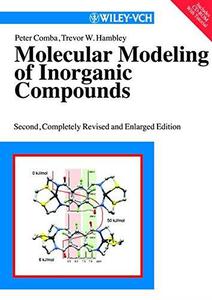
Molecular Modeling of Inorganic Compounds, Second Edition By Prof. Dr. Peter Comba, Prof. Dr. Trevor W. Hambley(auth.)
2001 | 322 Pages | ISBN: 3527299157 | PDF | 17 MB
In many branches of chemistry, Molecular Modeling is a well-established and powerful tool for the investigation of complex structures. The second completely revised and enlarged edition of this highly recognized book shows how this method can be successfully applied to inorganic and coordination compounds. The first part of the book gives a general introduction to Molecular Modeling, which will be of use for chemists in all areas. The second part discusses numerous carefully selected examples, chosen to illustrate the wide range of applicability of molecular modeling to metal complexes and the approaches being taken to dealing with some of the difficulties involved. While the general outline is similar to that of the first edition, many of the examples chosen for discussion reflect the changes of the past five years. In the third part, the reader learns how to apply Molecular Modeling to a new system and how to interpret the results. The accompanying software features 20 tutorial lessons based on examples from the literature and the book itself. The authors take special care to highlight possible pitfalls and offer advice on how to avoid them. Therefore, this book will be invaluable to everyone working in or entering the field. Content: Chapter 1 Introduction (pages 3-7): Chapter 2 Molecular Modeling Methods in Brief (pages 9-16): Chapter 3 Parameterization, Approximations and Limitations of Molecular Mechanics (pages 17-57): Chapter 4 Computation (pages 59-67): Chapter 5 The Multiple Minima Problem (pages 69-73): Chapter 6 Conclusions (pages 75-76): Chapter 7 Structural Aspects (pages 79-87): Chapter 8 Stereoselectivities (pages 89-102): Chapter 9 Metal Ion Selectivity (pages 103-118): Chapter 10 Spectroscopy (pages 119-139): Chapter 11 Electron Transfer (pages 141-148): Chapter 12 Electronic Effects (pages 149-159): Chapter 13 Bioinorganic Chemistry (pages 161-170): Chapter 14 Organometallics (pages 171-182): Chapter 15 Compounds with s?, p? and f?Block Elements (pages 183-189): Chapter 16 The Model, the Rules and the Pitfalls (pages 193-201): Chapter 17 Tutorial (pages 203-295):
E-Books → Computational Modeling of Inorganic Nanomaterials
Published by: voska89 on 20-07-2022, 10:44 |  0
0
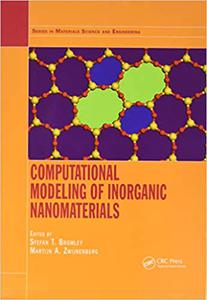
Stefan T. Bromley, Martijn A. Zwijnenburg, "Computational Modeling of Inorganic Nanomaterials"
English | 2016 | pages: 429 | ISBN: 1466576413 | PDF | 31,3 mb
Computational Modeling of Inorganic Nanomaterials provides an accessible, unified introduction to a variety of methods for modeling inorganic materials as their dimensions approach the nanoscale. With contributions from a team of international experts, the book guides readers on choosing the most appropriate models and methods for studying the structure and properties (such as atomic structure, optical absorption and luminescence, and electrical and heat transport) of a varied range of inorganic nanomaterial systems.
E-Books → Inorganic-Organic Composites for Water and Wastewater Treatment Volume 2
Published by: voska89 on 10-07-2022, 00:48 |  0
0
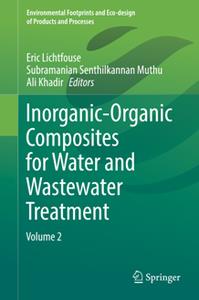
Inorganic-Organic Composites for Water and Wastewater Treatment : Volume 2
by Eric Lichtfouse, Subramanian Senthilkannan Muthu
English | 2022 | ISBN: 9811659273 | 329 Pages | True ePUB | 43 MB
E-Books → Data for Inorganic and Organic Compounds. Daten für Anorganische und Organische Verbindungen
Published by: voska89 on 9-07-2022, 02:48 |  0
0
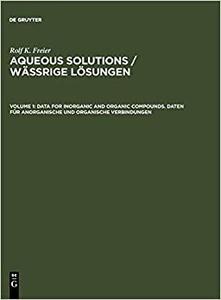
Rolf K. Freier, "Data for Inorganic and Organic Compounds. Daten für Anorganische und Organische Verbindungen"
English | 1975 | pages: 473 | ISBN: 3110016273 | PDF | 14,0 mb
Text: English, German
E-Books → Inorganic-Organic Composites for Water and Wastewater Treatment Volume 2
Published by: voska89 on 3-07-2022, 01:45 |  0
0
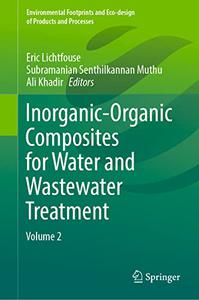
Inorganic-Organic Composites for Water and Wastewater Treatment: Volume 2 by Eric Lichtfouse
English | PDF | 2022 | 329 Pages | ISBN : 9811659273 | 7.3 MB
E-Books → Springer Handbook of Inorganic Photochemistry
Published by: voska89 on 28-06-2022, 14:02 |  0
0

Springer Handbook of Inorganic Photochemistry
English | 2022 | ISBN: 3030637123 | 1914 Pages | PDF (True) | 153 MB
The first section of the book describes the historical development of inorganic photochemistry, along with the fundamentals related to this multidisciplinary scientific field. The main experimental techniques employed in state-of-art studies are described in detail in the second section followed by a third section including theoretical investigations in the field. In the next three sections, the photophysical and photochemical properties of coordination compounds, supramolecular systems and inorganic semiconductors are summarized by experts on these materials. Finally, the application of photoactive inorganic compounds in key sectors of our society is highlighted. The sections cover applications in bioimaging and sensing, drug delivery and cancer therapy, solar energy conversion to electricity and fuels, organic synthesis, environmental remediation and optoelectronics among others.
E-Books → Inorganic Nanopesticides and Nanofertilizers A View from the Mechanisms of Action to Field Applications
Published by: voska89 on 25-06-2022, 06:55 |  0
0
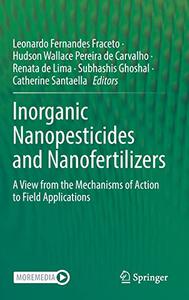
Inorganic Nanopesticides and Nanofertilizers: A View from the Mechanisms of Action to Field Applications by Leonardo Fernandes Fraceto
English | EPUB | 2022 | 400 Pages | ISBN : 303094154X | 37.8 MB
This book discusses inorganic/metallic nanopesticides and fertilizers. Rather than providing a general review of the topic, it offers a critical assessment of what has been achieved and highlights future measures to allow agriculture to profit from the properties of inorganic nanoparticles. It covers a variety of topics, including strategies for preparing cost-effective nanoparticles, their chemistry both within and outside the plant, the effects of nanoparticles in the field and whether the current strategies were successful in increasing crop yields. This book will appeal to readers in academia and industry, as well as stakeholders and anyone who has an interest in the applications of inorganic nanopesticides and nanofertilizers as well as the potential use of these technologies in agriculture.
E-Books → Biomedical Applications of Inorganic Materials
Published by: voska89 on 21-06-2022, 05:04 |  0
0
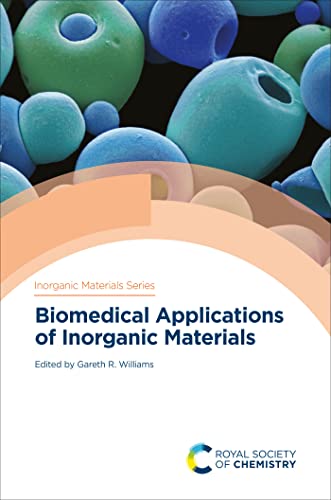
English | 2022 | ISBN: 1788016068 | 392 pages | True PDF EPUB | 23.4 MB
This book provides a contemporary research-led overview of the applications of inorganic materials in biomedicine. It begins with a short introduction summarising key concepts in inorganic materials (layered materials, framework materials etc.), and explaining the need for new materials in medicine. It then discusses the key areas in which inorganic materials have been applied, considering: drug delivery; imaging; diagnostics and theranostics; hard matter restoration; and vaccines. Each chapter gives an overview of the major extant challenges in the research area, before presenting a systematic review of how inorganic materials have been applied to gain traction in the field. A clear focus is maintained on the fate of the applied materials in vivo, clinical considerations, and the path to translation from lab to clinic. With contributions from leading researchers, Biomedical Applications of Inorganic Materials will provide a comprehensive introduction for advanced undergraduates, postgraduates and researchers wishing to learn about the topic.



